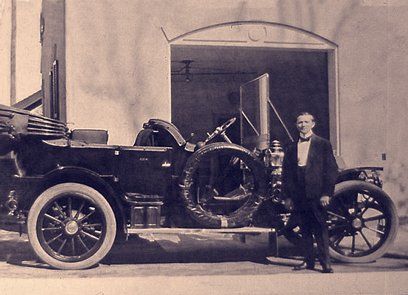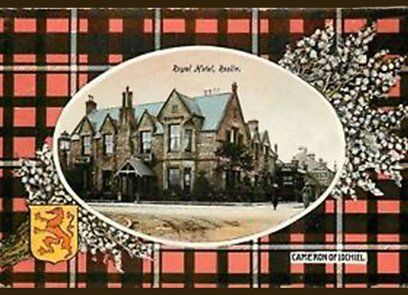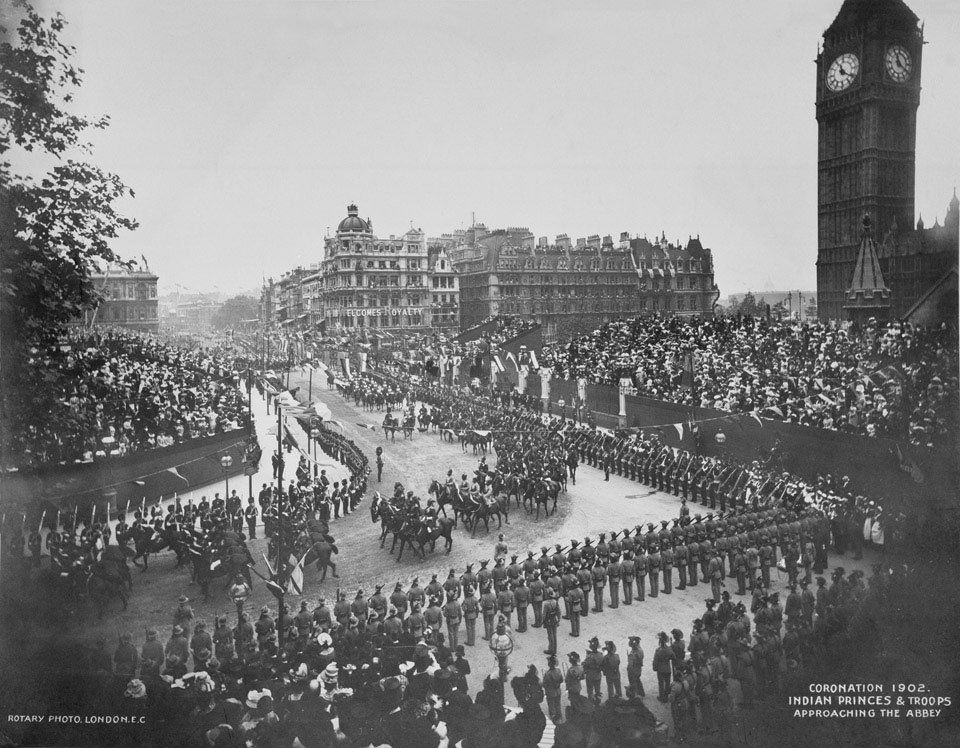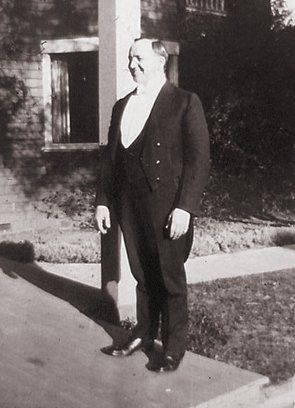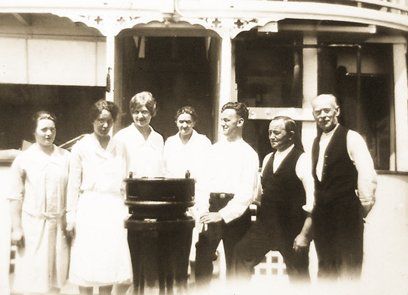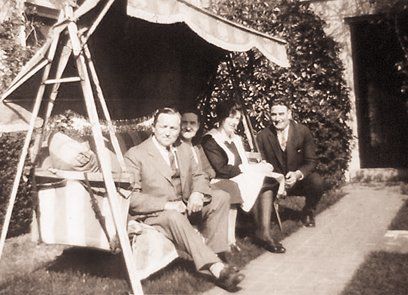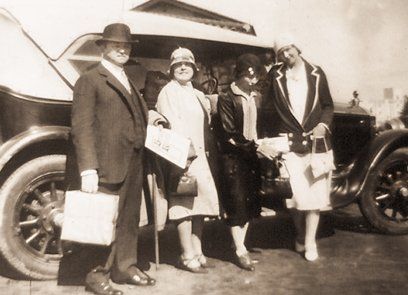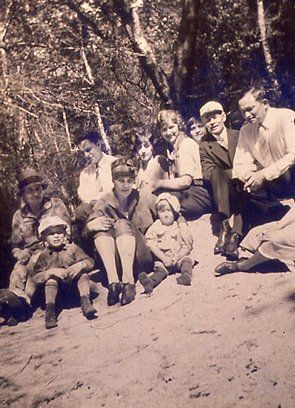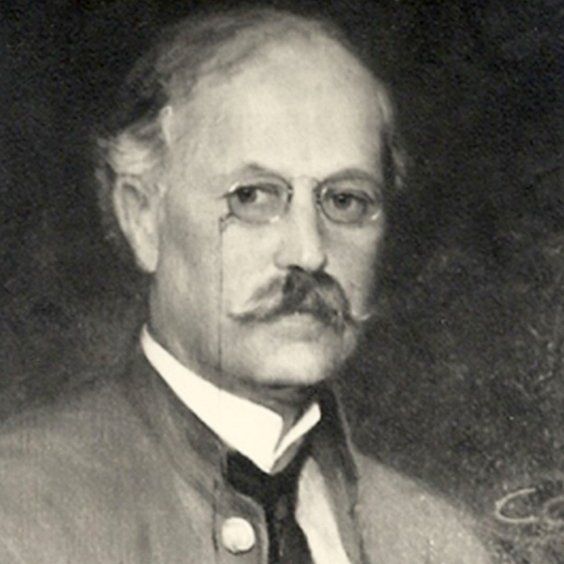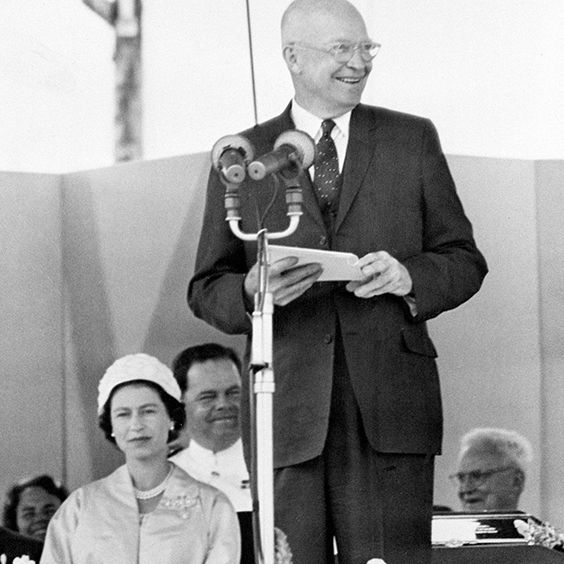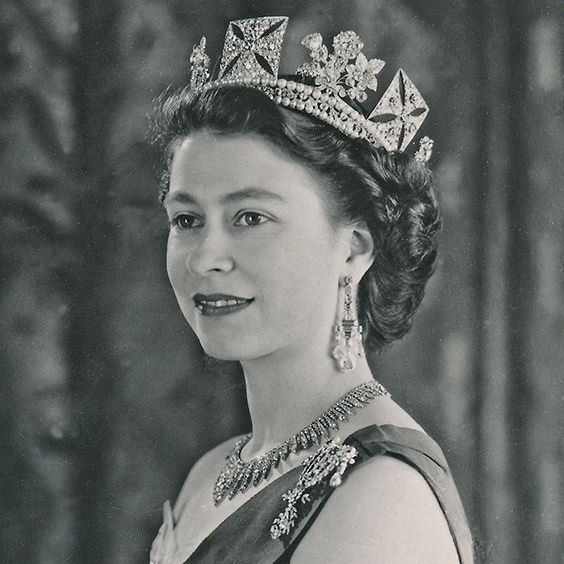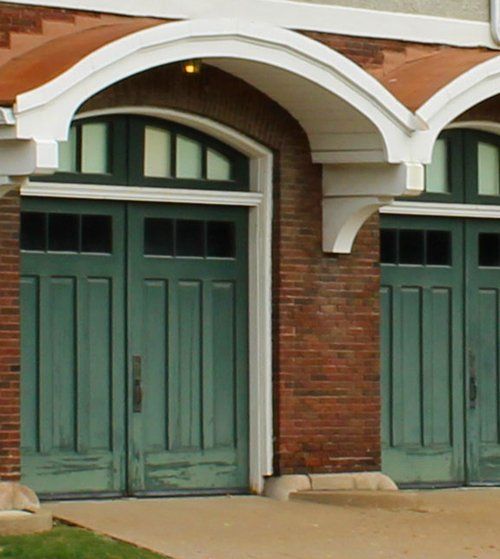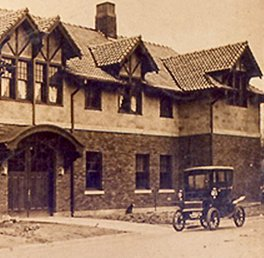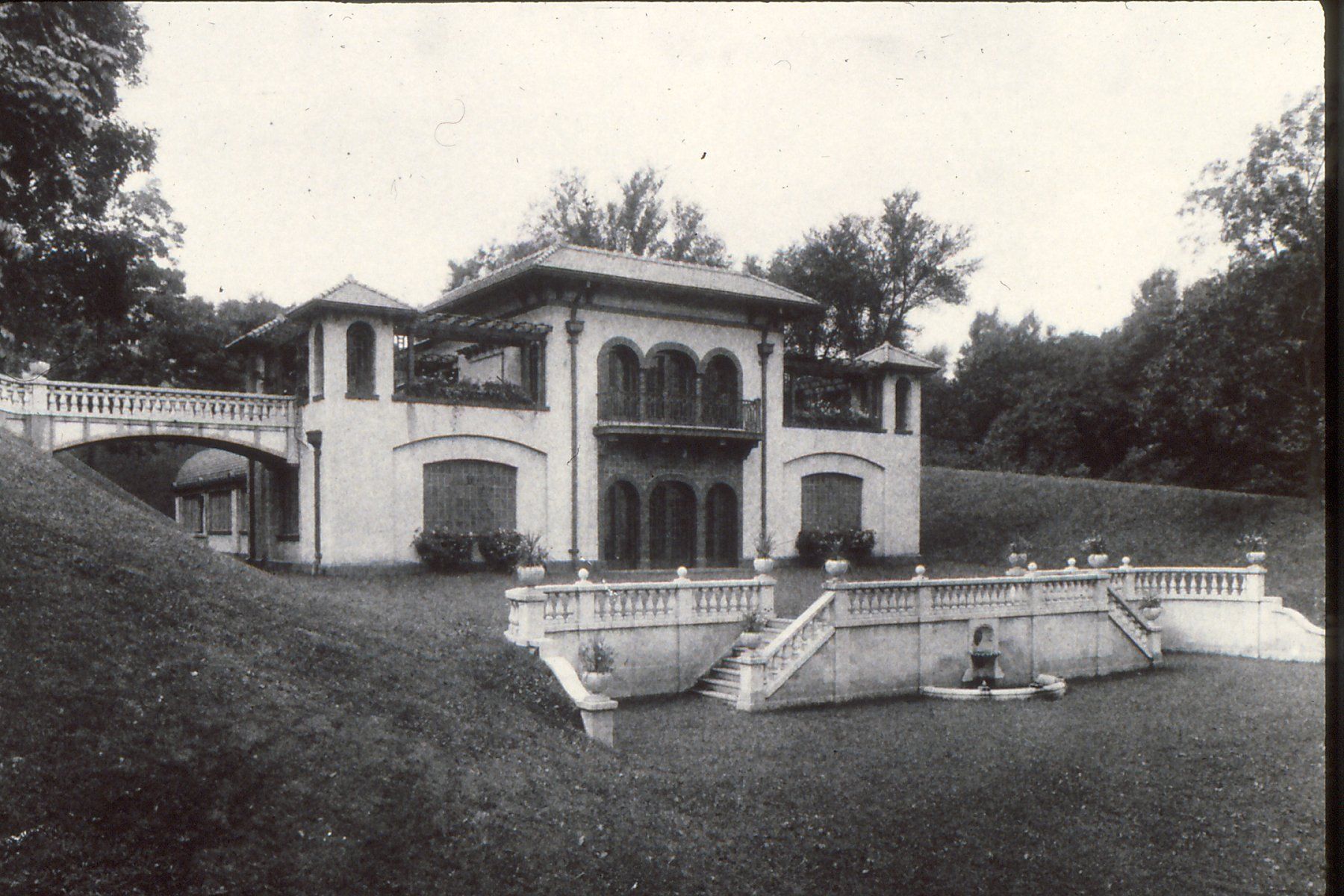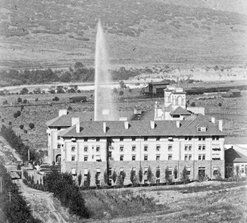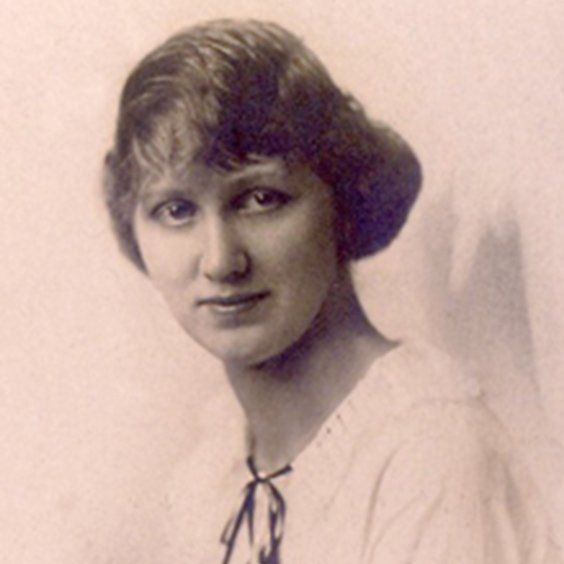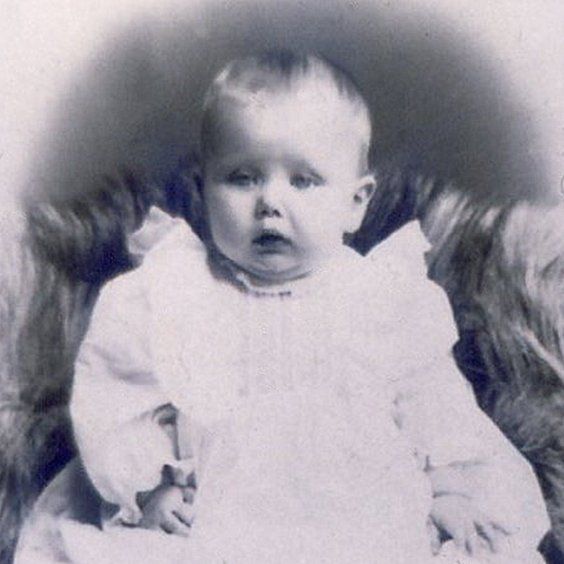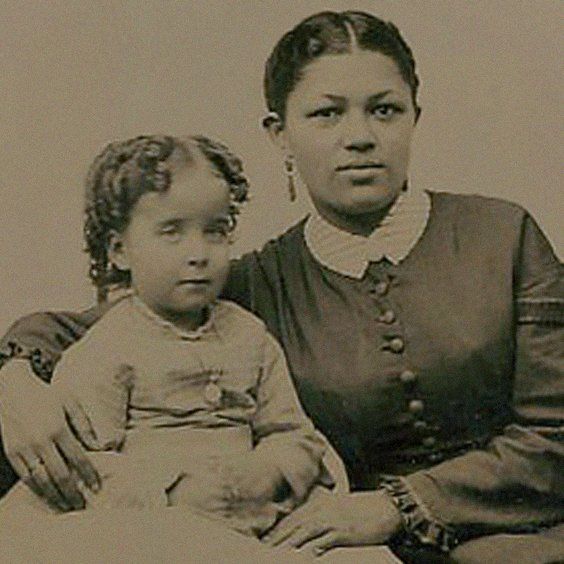Over the years, there have been many stories, photographs and historical documents added to our archives. One subject area I enjoy collecting is information on the staff that worked for the Deere, Wiman and Butterworth family.
I have searched for names of staff through a variety of sources. The wills of various family members produced many names. In addition, old newspaper articles, photographs and a variety of other documents have produced names of staff to add to the records. Another rewarding source has been meeting descendants of staff members. Family members have shared a wealth of information and photographs about their ancestors.
In this blog post, I want to share a bit of history on a member of the William and Katherine Butterworth household staff. Albert Boost was the Butterworth Butler for about 38 years. In old movies, you see the butler answering the home’s door. In actuality, the job of Butler was the central staff member in running a home and its’ staff.
Butlers were essentially the business manager of the home. In the Butterworth case, this meant that Albert oversaw Hillcrest, their primary residence in Moline and additionally the Chicago apartment, the home in Maryland, a Washington, D.C. apartment and two California homes. The Butler's job included all hiring and firing of staff.
What type of training did Albert have to prepare him for the job of Butler?
Albert was born in Leipzig, Germany in 1884, to William and Clara Boost. His father worked as a shoemaker, earning meager wages. At the age of 14 or 15, Albert entered an apprenticeship program for hotel service. He received no pay, just intensive training to enable himself to better his future. Twice a week, he attended school for three hours each day. Albert learned proper manners, the art of wine connoisseurship and how to deal with people. The rest of the week he learned hotel work from the ground up: washing china and glassware and polishing silverware. He also learned about food, how to set a table and proper serving techniques. All of this was done in a hotel setting through on the job training. When Albert was about 17 years old, he completed his apprenticeship and had no trouble landing a job.
His first job was in Scotland, because he wanted to learn English, travel and meet people from other countries. So the teenager left Germany to work at the Royal Hotel in Roslin, Scotland.
Albert’s next job was at a large hotel in London and then he returned to Scotland to become a valet to a wealthy man. A valet is a male servant who serves as personal attendant to his employer. He would maintain all belongings of the master of the house. During these moves, his English was improving, and he was adding new skills to his resume. By 1902, he was back in London as a valet to a British army officer. These moves seemed to have happened in about a years’ time. This wasn’t unusual for workers in hotels to move frequently, as they worked short term seasonal jobs. At the age of 18, a highlight for Albert was receiving a ticket from his army officer employer, to attend the procession of the coronation of King Edward VII. Pretty exciting for a young man who was the son of a shoemaker.
Albert had hoped that his training in hotel service would provide him with the ability to travel and learn new languages. Between 1902 and 1906, he fulfilled his dream. He worked in hotels in Geneva, Switzerland; Algiers, Africa; Basil, Switzerland; and Monte Carlo.
In 1906, Albert did his duty by fulfilling his conscription in the German army for 2 years. Once his service was completed his next job would change his life and enable him to achieve another dream, of moving to America. While working at a hotel in Baden Nauheim, he met a wealthy banker from Pittsburgh who offered Albert a position as his Butler. After 2 years in his employ, the banker died, and Albert was faced with his next move.
In 1911, Albert became the Butler for William Butterworth. I wish I knew how he connected with Mr. Butterworth and made the move to Moline. Years ago, Ruth Moll, Mrs. Butterworth’s secretary, told me that Mr. & Mrs. Butterworth had hired Albert away from his position in Pittsburgh.
Albert would work for the Butterworth family for the next 43 years. His training prepared him for the work he found at Hillcrest, the primary residence of William and Katherine Deere Butterworth. As manager of the home, he was perfectly qualified to coordinate everything going on in the Butterworth homes and could easily handle any entertaining events. Albert described in a May 29, 1953, Off the Beaten Path
article by Fred Klann, in the Moline Dispatch
,” Mr. Butterworth was an understanding man. He used to say to me, ‘Albert, if you decide to do something or some one asks you to do something, make up your mind to do it right, to do it the very best you can and know how. Otherwise, don’t try to do it at all’” And when asked about Mrs. Butterworth, Albert said “Everybody in the town knows how good she is, her many charities, her kindnesses, the wonderful things she has done for the community. She is the best to work for, really takes care of her help.”
Left to Right: Corine Carlson, Lydia Swanson, Ruth Moll, Emma Johnson, Herbert Schauer, Albert Boost, Fred Oakleaf
Left to right: Albert Boost, Emma Johnson, unknown woman, Dominic Jordano
From the many photographs in the Butterworth Archives, I think you can see how well-liked Albert Boost was by the rest of the staff. There appears to be a comradery among the staff. Albert oversaw a staff of about 20 at Hillcrest and then people at the other homes owned by the Butterworth couple. We know that when Mr. and Mrs. Butterworth would travel to one of their other homes or on trips, that Albert coordinated the moves. If the couple went to the Santa Barbara home for the winter, Albert and other staff members would head to California by train to prepare for the arrival of Mr. & Mrs. Butterworth on a later train.
Left to Right: Albert Boost, Madeline Jordano, unknown
woman, Ruth Moll
Albert would also travel with Mr. & Mrs. Butterworth when they went overseas. His mastery of multiple languages came in handy for the couple. His early life of moving from job to job gave him the ability to ensure that travel to anywhere went smoothly.
Albert and his wife Edith lived just one block from Hillcrest. There they raised two children. Albert Jr. became a captain in the US Air Force. His daughter Elinor’s husband was in the Navy, stationed in Washington, D.C. I was thrilled that I was able to connect with Elinor for a few years. She shared many wonderful stories and photographs. I could see that Albert’s children became a part of the Butterworth staff family. She had many fond memories of Hillcrest staff.
Left to Right, Front Row: Emma Johnson, Albert Boost Jr.,
Lydia Swanson, Elinor Boost. Left to Right, Back Row: Herbert Schauer, unknown
woman, Ruth Moll, unknown woman, Fred Oakleaf, Albert Boost
As I mentioned earlier, in May of 1953, Albert Boost finally agreed to let Fred Klann interview him for the Moline Dispatch
. On June 2, 1953, Queen Elizabeth’s coronation occurred. Katherine Deere Butterworth and Pattie Southhall Wiman (wife of Charles Deere Wiman) attended the coronation. I don’t know if Albert made this trip with them, but I am sure he remembered the procession he saw for King Edward the VII in 1901. Almost 52 years had passed, and Albert had led a fascinating and fulfilling life.
When Katherine Deere Butterworth passed in 1953, Albert and his wife settled in Santa Barbara, CA. Their many trips to the Butterworth home made this a familiar place to retire.
